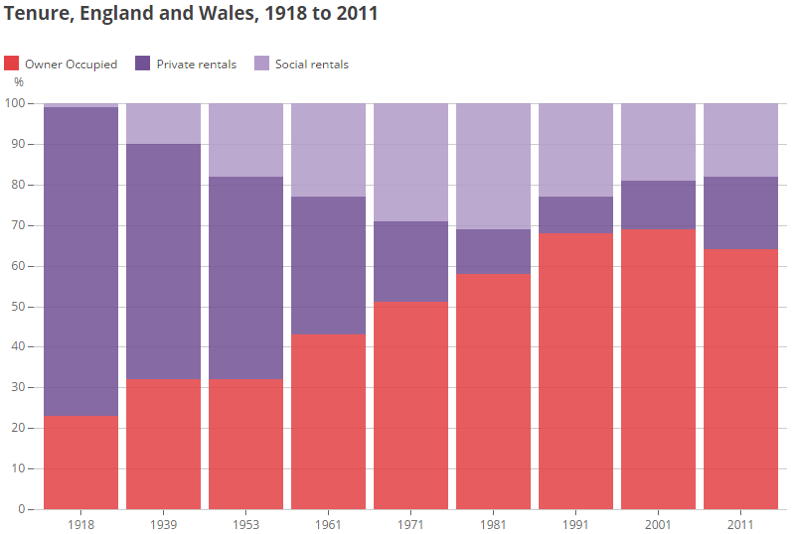KBzine: the original kitchen and bathroom industry e-news - since 2002
28th January 2021
We strongly recommend viewing KBzine full size in your web browser. Click our masthead above to visit our website version.
Some questions answered as census reveals swing to renting began early this millennium?
 If you've been wondering why this millennium has seen a drop in numbers of buyers going for top end furniture, fittings and appliances, the latest 2011 census figures, released today, may have the answer.
If you've been wondering why this millennium has seen a drop in numbers of buyers going for top end furniture, fittings and appliances, the latest 2011 census figures, released today, may have the answer.
The fact that the housing market stalled in recent years has been well documented - as has the increase in the number of career landlords or those using a rental property or two to fund their retirement income; but only for the past couple of years.
However, the changes go back further than any of us may have realised, with the 2011 census showing that there was a marked reversal in the 100 year trend for people to buy rather than rent their homes. Bearing in mind that landlords tend not to install the most expensive furniture and appliances in properties they plan to rent out, this trend reversal may have impacted on people's purchasing decisions and thus - if you're a manufacturer or retailer - your bottom line. Here are the finer details of the report:
The decade 2001 to 2011 saw substantial changes in longstanding trends in home ownership and renting. In 2011, the proportion of owned homes decreased by five percentage points, the first fall in a century. As a consequence, home rentals have increased - this was more common among young people. At the same time, 1.1 million household in England and Wales were overcrowded.
Statistics on housing and home-ownership are essential for planning and monitoring of housing provision across the country.
The decade 2001 to 2011 saw substantial changes in longstanding trends in home ownership and renting. In 2011, more than half (64%, 15.0 million) of the 23.4 million households in England and Wales were owner occupied, however this was a decline from 69% in 2001, which was the first fall in a century.
As a consequence, there has been an increase in the proportion of rented households (31% to 36%), particularly within the private sector; private rentals rose from 12% to 18% of the housing market, whilst social rented households remained stable, falling slightly from 19% to 18%.
Renters were younger and less likely to be employed. Almost nine in 10 (87%) Household Representative Persons (usually the oldest full-time worker in a household) aged 16-24 were renting compared with less than a quarter (24%) of those aged 65-74. Meanwhile, only 1% of HRPs who owned their house were unemployed, compared with 7% of HRPs who rented.
While the majority of households (69%, 16.1 million) were under-occupied in 2011, almost one in 20 (5%, 1.1 million) households were overcrowded.
More than two-thirds (68%) of all overcrowded households were rented. In fact rented households were nearly four times more likely (8.6% private rented, 8.7% social rented) to be overcrowded than owner-occupied households (2.3%).
The greatest extent of household overcrowding was seen in London where around 1 in 10 (11%) households were overcrowded. This was more than twice the level seen in the West Midlands, the region with the second highest degree of household overcrowding at 5%. Housing costs are likely to be the main driver of overcrowding in London compared to the rest of England and Wales.
E: [email protected]
W: www.ons.gov.uk
19th June 2015








